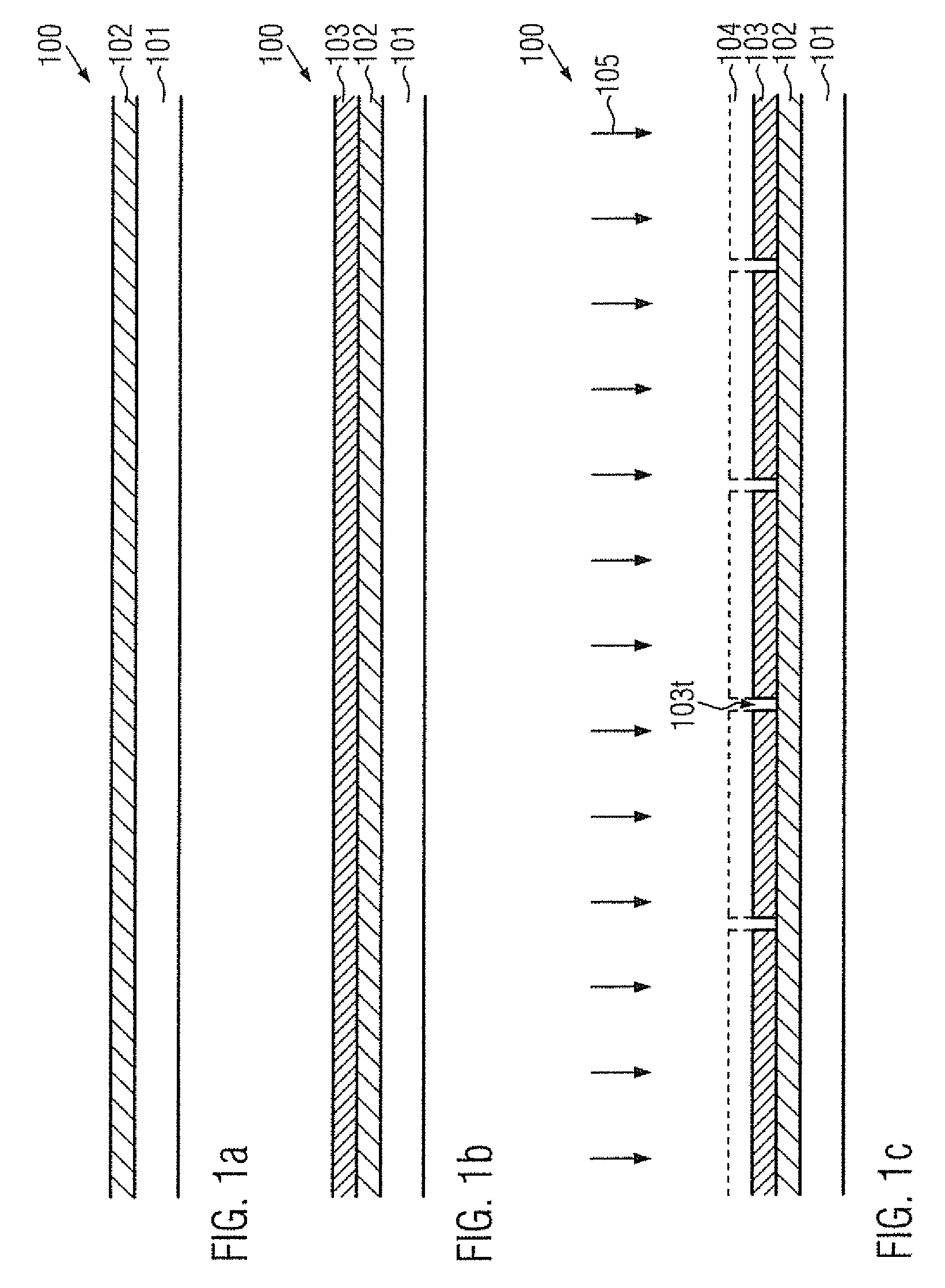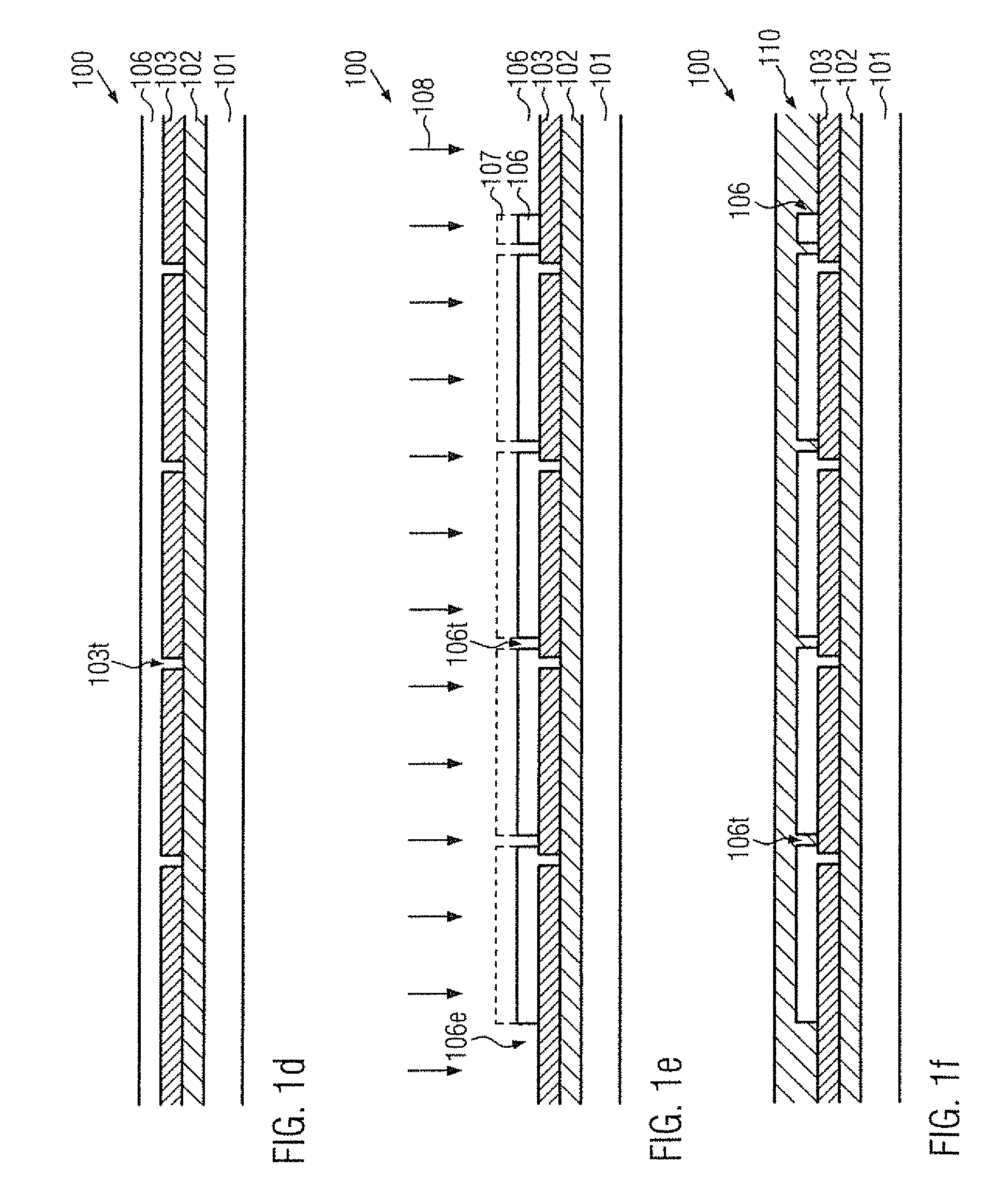Thin film solar cell module including series-connected cells formed on a flexible substrate by using lithography
a solar cell and series-connected technology, applied in the field of solar cell technology, can solve the problems of significantly less lateral dimensions of isolation trenches and contact trenches than the corresponding critical dimensions, and achieve the effect of reducing the dead area of the module, reducing the probability of creating patterning related irregularities in the form of metal flakes, and enhancing the overall internal conversion efficiency
- Summary
- Abstract
- Description
- Claims
- Application Information
AI Technical Summary
Benefits of technology
Problems solved by technology
Method used
Image
Examples
Embodiment Construction
[0042]FIG. 1a schematically illustrates a cross-sectional view of a solar module 100 in a manufacturing stage, in which a carrier material 101, such as a semiconductor wafer and the like, is provided in order to receive a substrate material 102 of the solar module 100. The substrate material 102 may be selected as any appropriate carrier material, wherein in preferred embodiments substrate materials may be used, which may typically not be considered appropriate for applying conventional patterning techniques on the basis of laser scribing techniques. For example, the substrate material 102 may be generally a flexible material in the form of polyimide or any other plastic material.
[0043]It should be appreciated, however, that, although flexible substrates provide for superior performance in particular in indoor applications, basically the present invention may also be implemented in the context of any other carrier material, as are also typically used in conventional solar modules. T...
PUM
 Login to View More
Login to View More Abstract
Description
Claims
Application Information
 Login to View More
Login to View More - R&D
- Intellectual Property
- Life Sciences
- Materials
- Tech Scout
- Unparalleled Data Quality
- Higher Quality Content
- 60% Fewer Hallucinations
Browse by: Latest US Patents, China's latest patents, Technical Efficacy Thesaurus, Application Domain, Technology Topic, Popular Technical Reports.
© 2025 PatSnap. All rights reserved.Legal|Privacy policy|Modern Slavery Act Transparency Statement|Sitemap|About US| Contact US: help@patsnap.com



